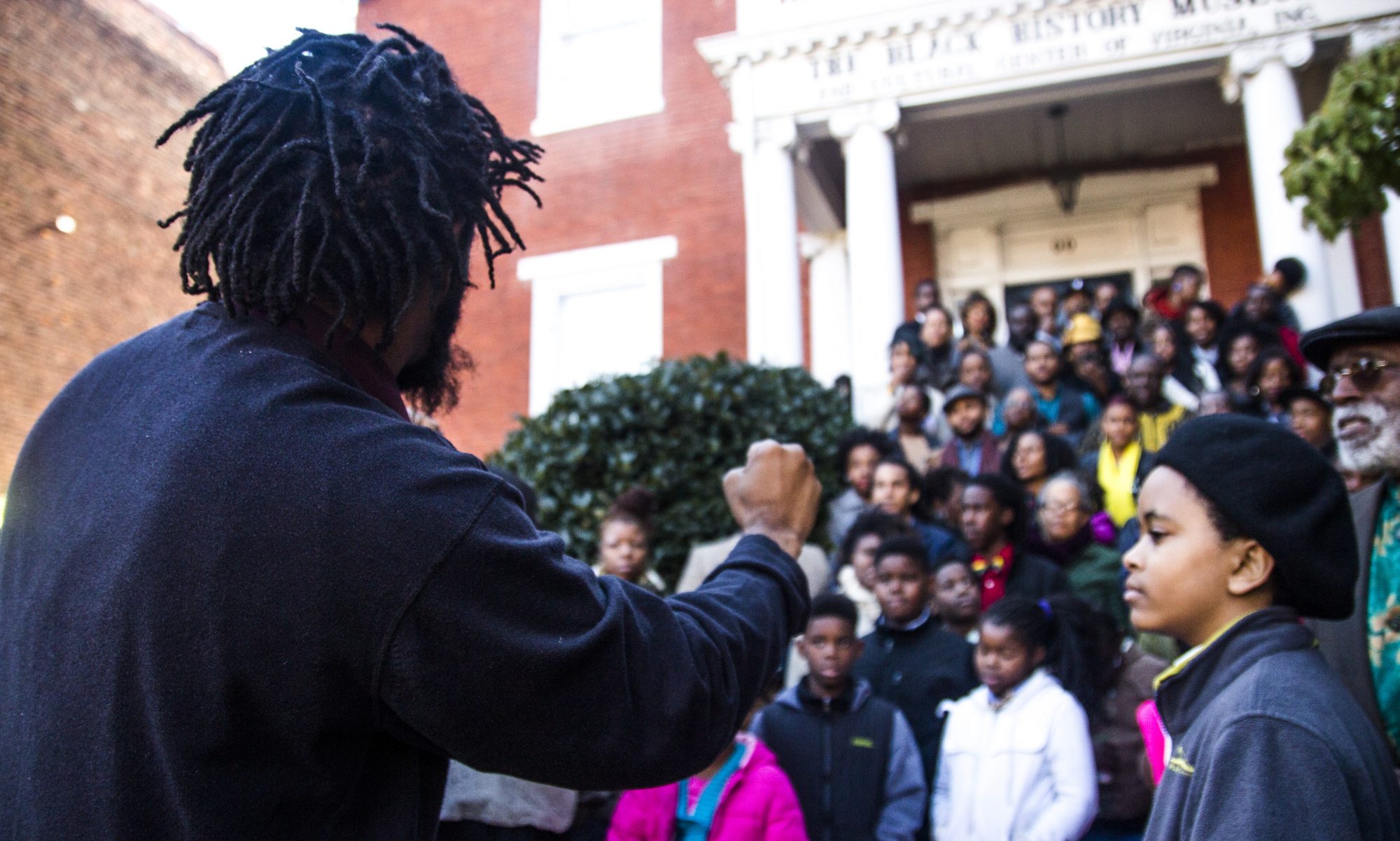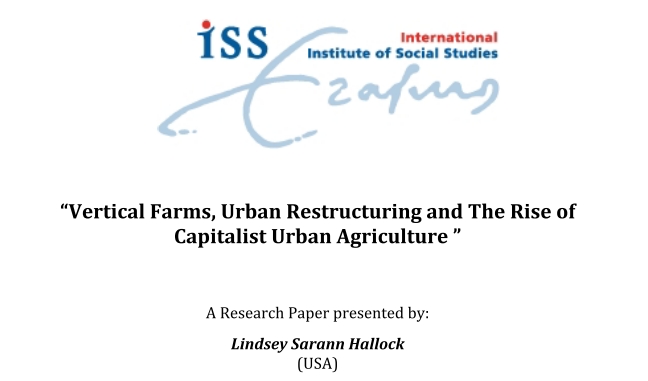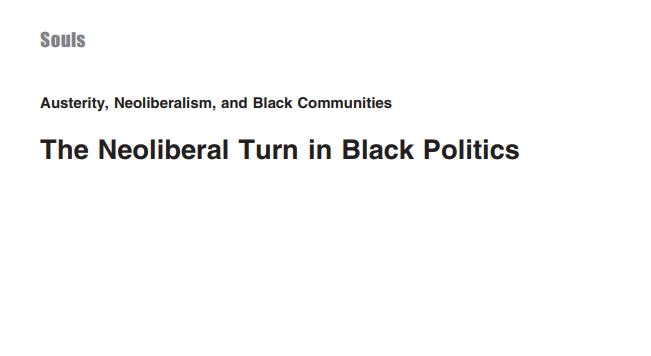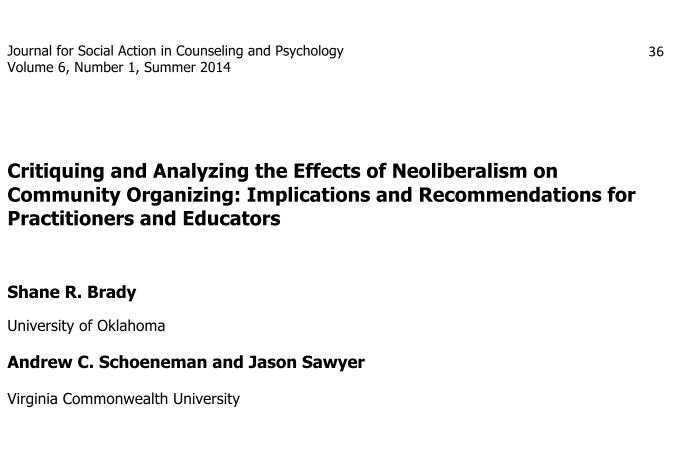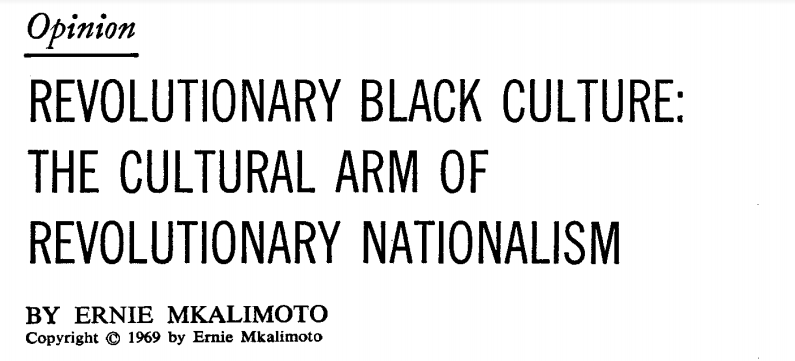The literature is clear that African American youth receive a shallow account from parents and schools about Black history. African American male youth from lowincome families in particular rarely receive information about Black history. Youth today watch more television than past generations, and African American youth are no exception to this trend. In fact, they watch more television than any other ethnic group. While youth watch television for entertainment, they also absorb new facts and information about the world around them – and ultimately, about themselves. It follows that because Black children watch more television than any other ethnic group, there is greater concern about the content they consume. In this vein, the relationship of television imagery to ethnic identity and development among low-income African American male youth becomes central. Television media has a long history of portraying African Americans in a negative light. Subsequently, the negative media portrayals of African Americans have impacted their racial identity, self-esteem, self-efficacy and their mental health. No research has been done on the effects of watching a Black History film since Roots back in the 1970’s. Further research is needed to understand the impact of how watching and learn from a Black history documentary impacts low-income young African American males’ racial identity, self-esteem, self-efficacy, and depression.
Vertical Farms, Urban Restructuring and The Rise of Capitalist Urban Agriculture
This paper seeks to examine the rise of vertical farms, and the ways in which they advance the corporate food regime and encourage urban elite consumption. It will discuss two contemporary ‘localizing’ trends: the call for local food systems and local urban restructuring in the era of neoliberalism. I argue that the intersection of these two trends, spatially and temporally, created market opportunities for capital to appropriate social movement demands for local agricultural production, and encouraged the rise of capitalist forms of local food production (vertical farms). I will first introduce the vertical farm concept and currently operating vertical farms referred to throughout the paper. Then, using a theoretical tool developed by Robbins (2013), I will differentiate these farms as local food projects that reproduce the capitalist industrial system, rather than challenging it. In the third chapter, I discuss the analytical frameworks used in the paper: uneven geographic development and food regime analysis. The next chapter discusses how class struggle produced the calls for local food movements, as a response to inequity in the global corporate food regime. I then detail how devalued built environments and labor surplus, characteristics of cities under “actually existing neoliberalism”, facilitated corporate appropriation of the local foods concept by producing profitable conditions for capitalist urban agriculture, which was hailed as local economic development. In the last chapter, I will discuss how these farms serve to reproduce troubling trends in the corporate food regime, and signify new developments in capital’s ability to standardize the food cultivation process, and to incorporate it into factory like production systems.
The Neoliberal Turn in Black Politics
The neoliberal turn arguably has a powerful effect on black political ideas, black political practices, and black life in general; the nature of this effect has gone under-examined. In this work I seek to rectify this gap by examining neoliberalgovernmentality as it appears in black communities. The result should deepen our understanding of class politics within racially subjugated communities, and should push us to consider a much wider range of phenomenon when examining the way resources are distributed within already
resource-poor black communities.
Critiquing and Analyzing the Effects of Neoliberalism on Community Organizing: Implications and Recommendations for Practitioners and Educators
Although community organizing has historic and current roots as a mode of practice, characterized by people coming together to collectively address unmet needs and/or challenge inequality, neoliberal trends beginning to form in the 1980s have negatively impacted community organizing. Neoliberal values, which promote individualism, capitalism, the existence of welfare states, and reform from solely within the system are concerning to the future of community practice. This article provides a critique and analysis of the impact of neoliberalism on community organizing in three areas: The influence of evidence-based practice on dictating how community organizers practice, a lack of focus on social movements in community organizing, and the professionalization of community organizing, which marginalizes non-professionals engaged in community organizing. This article exposes potential problems arising from within community organizing as a result of neoliberalism. In order to uncover and analyze the major effects of neoliberalism, we propose a theoretical framework that combines critical theory and Foucault’s work on social control. We end the analysis by providing recommendations for practitioners of community organizing as well as for educators teaching about community organizing.
The Racism Root Kit: Understanding the Insidiousness of White Privilege
Despite efforts to increase racial awareness, Whites continue to display limitations in their ability
to acknowledge their racist transgressions when confronted. Seemingly open-minded Whites
continue to display what many authors have defined as “racial microaggressions” yet display an
unwillingness to explore the antecedents to their behavior once challenged. What are the
mechanisms that Whites utilize that prevent them from being open to considering underlying
motivations of their behaviors? Failure to acknowledge the invisible Whiteness of being, the
myth of meritocracy, and the associated privileges that come from White superiority play a
significant role in preventing the establishment of empathic connections with people of color.
Using the metaphor of a computer root program, which remains hidden from the operating
system, designed to conceal itself from the overall operating system, a set of racist behaviors,
representing a “racist root kit” are highlighted that can serve as an explanation for the difficulties
Whites have when confronted with their behavior.
Meritocracy, Self-Concerns, and Whites’ Denial of Racial Inequity
We propose that embracing meritocracy as a distribution rule causes Whites to deny the existence of racial inequity. On this view, Whites who endorse meritocracy seek to regard themselves as high in merit, and maintain this self-view by denying racial privilege. Four studies show that preference for meritocracy better predicts denial of White privilege than anti-Black discrimination (Study 1), that the desire to see the self as meritorious mediates the relationship between preference for meritocracy and denial of privilege (Study 2), that this
meritocracy–privilege relationship is moderated by Whites’ need to bolster the self (Study 3), and that priming the meritocracy norm reduces perceptions of racial privilege among highly identified Whites (Study 4). Implications for the amelioration of social inequity are discussed.
White Fragility
White people in North America live in a social environment that protects and in-sulates them from race-based stress. This insulated environment of racial protec-tion builds white expectations for racial comfort while at the same time lowering the ability to tolerate racial stress, leading to what I refer to as White Fragility.
White Fragility is a state in which even a minimum amount of racial stress becomes intolerable, triggering a range of defensive moves. These moves include
the outward display of emotions such as anger, fear, and guilt, and behaviors such as argumentation, silence, and leaving the stress-inducing situation. These behav-
iors, in turn, function to reinstate white racial equilibrium. This paper explicates the dynamics of White Fragility.
REVOLUTIONARY BLACK CULTURE: THE CULTURAL ARM OF REVOLUTIONARY NATIONALISM
Black Nationalism in America
Black men, throughout their history in America, have manifested nationalist sentiment. Some have always leaned toward separatist ideology and solutions. Even essentially integrationist and assimilationist thinkers have often had nationalist strains in their social philosophies. Thus, in 1897, W. E. B. Du Bois wrote :
. . . One ever feels his two-ness-an American, a Negro; two
souls, two thoughts, two unreconciled strivings ; two warring ideals in one dark body, whose dogged strength alone keeps it from
being torn asunder .The history of the American Negro is the history of this strife, this longing to attain self-conscious manhood, to merge his double self into a better and truer self. In this merging he wishes neither of the older selves to be lost. He does not wish to Africanize America, for America has too much to teach the world and Africa.
He does not wish to bleach his Negro blood in a flood of white Americanism, for he believes . . . that Negro blood has yet a message for the world. He simply wishes to make it possible for a man to be both a Negro and an American without being cursed and spit upon. . . .
W. E. B. Du Bois, “Strivings of the Negro People,” Atlantic
Monthly, LXXX (August 1897), 194-195.
Nationalist ideologies have been in the ascendant only at certain historical periods; in others, the major emphasis has been on racial integration and assimilation. During four periods, nationalist sentiment in various forms has been prominent in Negro thought: the turn of the eighteenth century, roughly from 1790 to 1820; the late 1840s and especially the 1850s; the nearly half-century stretching approximately from the 1880s into the 1920s; and since the middle 1960s. In general, nationalist sentiment, although present throughout the black man’s experience in America, tends to be most pronounced when the Negroes’ status has declined, or when they have experienced intense disillusionment following a period of heightened but
unfulfilled expectations.
This introductory essay will describe the chief recurring varieties of black nationalism and trace black nationalism as a whole in the main periods of black history in the United States .
In a concluding section the three editors will present their differing interpretations of the nature and pattern of the phenomena they first describe.
How Europe Underdeveloped Africa by Walter Rodney
This book derives from a concern with the contemporary African
situation. It delves into the past only because otherwise it would be
impossible to understand how the present came into being and what the
trends are for the near future. In the search for an understanding of what
is now called “underdevelopment” in Africa, the limits of enquiry have
had to be fixed as far apart as the fifteenth century, on the one hand and
the end of the colonial period, on the other hand.
Ideally. an analysis of underdevelopment should come even closer to
the present than the end of the colonial period in the 1960s. The
phenomenon of neo-colonialism cries out for extensive investigation in
order to formulate the strategy and tactics of African emancipation and
development. This study does not go that far, but at least certain
solutions are implicit in a correct historical evaluation, just as given
medical remedies are indicated or contra-indicated by a correct
diagnosis of a patient’s condition and an accurate case-history.
Hopefully, the facts and interpretation that follow will make a small
contribution towards reinforcing the conclusion that African
development is possible only on the basis of a radical break with the
international capitalist system, which has been the principal agency of
underdevelopment of Africa over the last five centuries.
White Priviledge Checklist w/ White Benefits; Middle Class Priviledge



It is not necessarily a privilege to be white*, but it certainly has its
benefits. That’s why so many of us gave up our unique histories, primary languages, accents, distinctive dress, family names and cultural expressions. It
seemed like a small price to pay for acceptance in the circle of whiteness. Even with these sacrifices it wasn’t easy to pass as white if we were Italian, Greek,
Irish, Jewish, Spanish, Hungarian, or Polish. Sometimes it took generations before our families were fully accepted, and then usually because white society
had an even greater fear of darker skinned people.
Privileges are the economic “extras” that those of us who are middle class and wealthy gain at the expense of poor and working class people of all races.Benefits, on the other hand, are the advantages that all white people gain at the expense of people of color regardless of economic position. Talk about racial benefits can ring false to many of us who don’t have the economic privileges that we see many in this society enjoying. But just because we don’t have the economic privileges of those with more money doesn’t mean we
haven’t enjoyed some of the benefits of being white.
“To Make Them Stand in Fear”: The Slaveowning South
Thanks to the influence of the 1939 motion picture Gone with the Wind, many
white Americans still think of the Old South as a romantic land of magnolias and landscaped manors, of cavalier gentlemen and happy darkies, of elegant ladies and breathless belles in crinoline—an ordered, leisurely world in which men and women, blacks and whites, all had their destined place. This view of Dixie is one of America’s most enduring myths (Gone with the Wind still commands huge audiences when it runs on television). The real world of the Old South was far more complex and cruel.
Modern historical studies have demonstrated that antebellum Dixie was a rigidly patriarchal, slave-based social order that might have lasted indefinitely had not the Civil War broken out. At no time was slavery on the verge of dying out naturally.
Tobacco cultivation may have become unprofitable by the Revolutionary period, but the invention of the cotton gin in 1793 stimulated cotton production immeasurably and created a tremendous demand for slave labor.
Thanks to the cotton gin, slavery spread beyond the fertile black belt of Alabama and Mississippi, out to the Kansas-Missouri border, to the fringes of western Arkansas, and to south and east Texas. Although Congress outlawed
the foreign slave trade in 1808 (it simply continued as illicit traffic), the number of slaves rose dramatically so that by 1860 there were nearly 4 million in fifteen slave states, including Delaware and Maryland. Slavery remained profitable, too, as evidenced by the fact that in 1860 a prime field hand sold for $1,250 in Virginia and $1,800 on the auction blocks in New Orleans. A “fancy girl” went for as high as $2,500. Still, from the southern white’s viewpoint, the profitability of slavery was not the crucial issue. Had slavery proved too costly in its plantation setting, southerners would have found other ways to use slave labor and keep blacks in chains, to maintain white male supremacy in the region.
The slaveholding South was a brutal system that sought to strip black people of all human rights, reducing them to the status of cattle, swine, wagons, and other “property.” The slaveholders resorted to a complex “apparatus of control” by which they ruled the region. The symbol of their power was the ubiquitous whip, which, in the words of another historian, was calculated to make the slaves “stand in fear.” Yet, as we saw in the portrait of Nat Turner (selection 15), the slaves created survival mechanisms in the form of their families, black religion, and a slave underground, which helped them “keep on keepin’ on” in life under the lash. And they resisted, most of them did, by committing acts of terrorism (arson and sabotage) or day-to-day obstructionism, such as “accidently” breaking their hoes. As historian Deborah Gray White has pointed out, pregnant mothers sometimes conspired with midwives to abort their fetuses and even commit infanticide, so that their children would not suffer as they had. The slaves protested, too, in their songs and in their folk tales about how weak, clever animals (the slaves) could outwit larger, menacing animals (the masters).
To understand the antebellum South, one must remember that the region was divided into two distinct classes of white, slaveholders and non-slaveholders, with the latter constituting a majority of the white population. Non-slaveholders included poor whites— “po white trash,”“rednecks,” or “hillbillies,” in the vernacular of the day—who lived on impoverished subsistence farms in the unproductive hill country and pine barrens. The class also included middle-class yeoman farmers who raised crops for market and city-dwelling merchants, artisans, and day-laborers. Since slaveholding was a potent status symbol and a great means of wealth, most of these individuals aspired to own slaves and rise up in the class scale.
Compared to the slaveholders, all non-slaveholding whites were relatively poor. Slaveholders owned more than 90 percent of the South’s agricultural wealth; their average wealth was fourteen times greater than that of non-slaveholders. The planters, those who owned twenty or more slaves, were a minority in the slaveholding class—they numbered only 46,000 in 1860. Yet the planters owned most of the slaves and most of the agricultural wealth of their class and truly ruled the region. By stressing white racial supremacy and black inferiority and by playing on the fears of abolition, the ruling planters and their small slaveholding allies were able to unite poor whites, yeoman farmers and city dwellers behind the slave regime. In short, they successfully divided whites and blacks.
Despite the cruel nature of the slave system, African Americans, as black historian John W. Blassingame points out in the following selection, found ways to force the system to recognize their humanity, which compelled the planters to make compromises “in order to maintain the facade of absolute control.” Blassingame disagrees with those historians who have argued that the slave system was so brutal that it damaged African Americans irreparably, reducing them to infantile or abject docility. Even so, as Blassingame’s narrative shows, the slave system was cruel to the blacks— Blassingames’s description of the various forms of punishment is particularly harrowing.
Slavery left an indelible mark on both races. As African American historian Lerone Bennett Jr. wrote in his Confrontation: Black and White (1965): “Slavery, in sum, was a seed experience. The significant dimensions of the race problem, the special dynamism that gave [the racial upheavals of the 1960s] their special harshness, are reflections of eddies that lie deep in the mind and deep in the past. The Negro is what he is today because he was once held in slavery by white people. And white people are what they are today because they cannot forget, because Negroes will not let them forget, what they did yesterday.”
